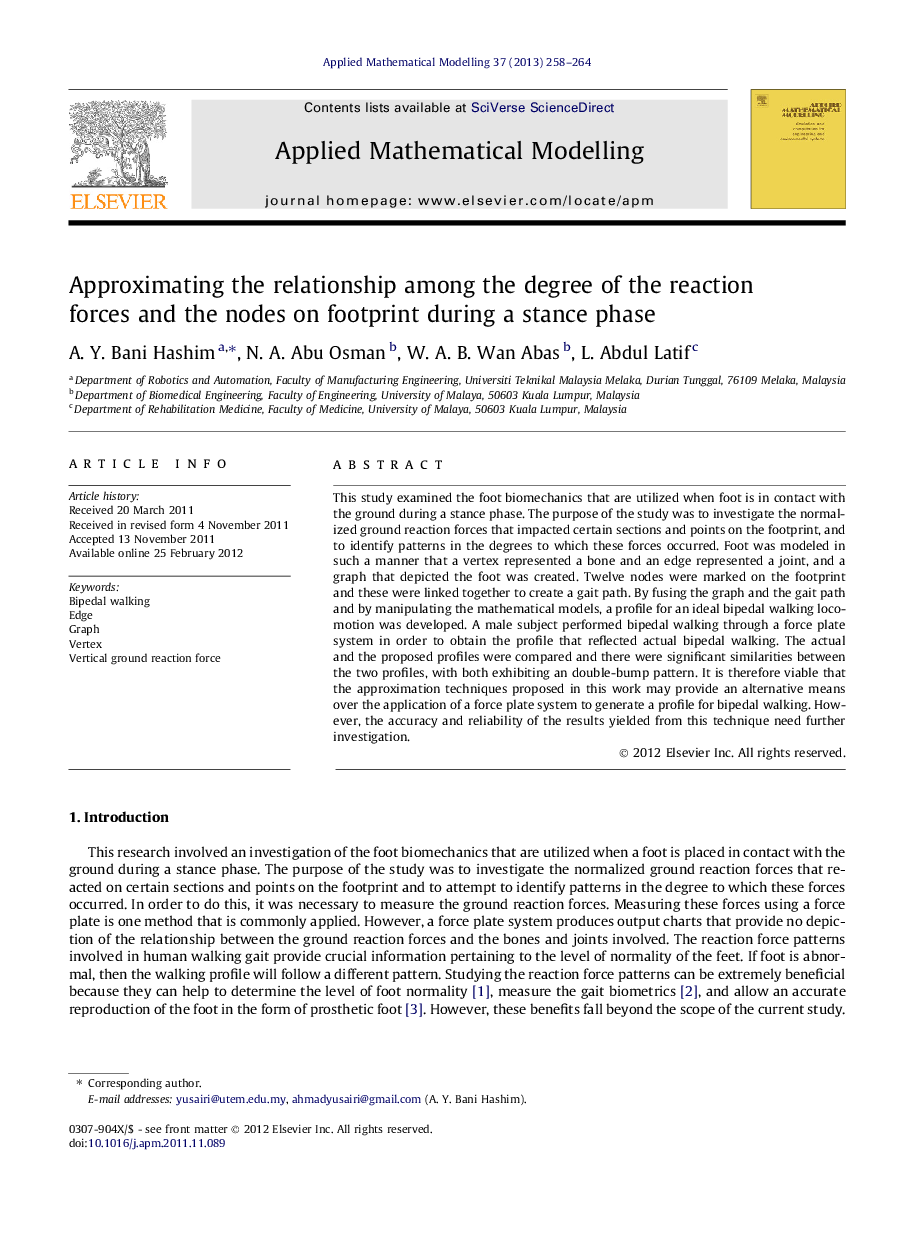| Article ID | Journal | Published Year | Pages | File Type |
|---|---|---|---|---|
| 8053094 | Applied Mathematical Modelling | 2013 | 7 Pages |
Abstract
This study examined the foot biomechanics that are utilized when foot is in contact with the ground during a stance phase. The purpose of the study was to investigate the normalized ground reaction forces that impacted certain sections and points on the footprint, and to identify patterns in the degrees to which these forces occurred. Foot was modeled in such a manner that a vertex represented a bone and an edge represented a joint, and a graph that depicted the foot was created. Twelve nodes were marked on the footprint and these were linked together to create a gait path. By fusing the graph and the gait path and by manipulating the mathematical models, a profile for an ideal bipedal walking locomotion was developed. A male subject performed bipedal walking through a force plate system in order to obtain the profile that reflected actual bipedal walking. The actual and the proposed profiles were compared and there were significant similarities between the two profiles, with both exhibiting an double-bump pattern. It is therefore viable that the approximation techniques proposed in this work may provide an alternative means over the application of a force plate system to generate a profile for bipedal walking. However, the accuracy and reliability of the results yielded from this technique need further investigation.
Related Topics
Physical Sciences and Engineering
Engineering
Computational Mechanics
Authors
A.Y. Bani Hashim, N.A. Abu Osman, W.A.B. Wan Abas, L. Abdul Latif,
